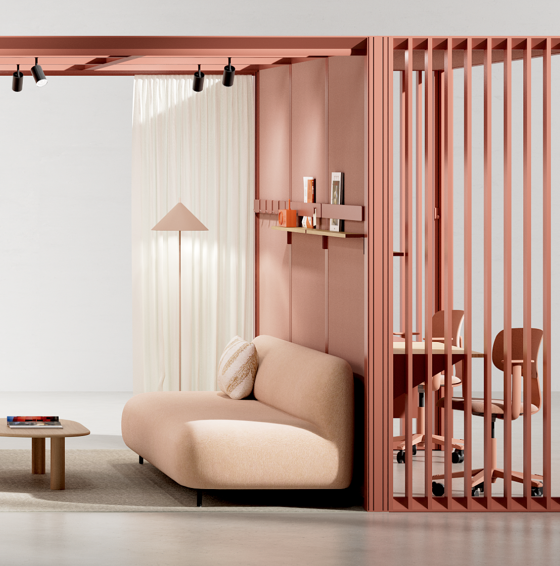Magnolia House // Ezequiel Farca Studio
Text description provided by the architects.
CASA MAGNOLIAALCANCES DE TRABAJO: Renovación arquitectónica, Arquitectura interior, diseño de interiores y mobiliarioÁREA: 8,245 ft2 / 766 m2UBICACIÓN Y FECHA: Ciudad de México, México / 2017ARQUITECTURA: Ezequiel Farca © en colaboración con Cristina Grappin ©FOTOGRAFÍA: Jaime Navarro ©Casa Magnolia es un proyecto de renovación en el cual se buscó primordialmente reordenar espacios y mejorar notablemente sus cualidades espaciales, funcionales y formales.

© Ezequiel Farca Studio
El aprovechamiento de la estructura existente y su reestructuración nos permitió añadir dichos valores habitables para así mejorar las vistas, tener una mayor amplitud espacial y generar una conexión directa entre el exterior y el interior para así vivir la casa completamente con su contexto inmediato.
El espacio original -para el cual diseñamos el mobiliario- se mantuvo intacto durante 25 años y dadas las necesidades actuales de la familia su programa dejó de funcionar; así que decidimos no sólo resolverlo desde la parte funcional, incluimos una colección de arte y también generamos un nuevo lenguaje con una volumetría que consta de 3 bloques habitables terminados en mármol Travertino.

© Ezequiel Farca Studio
En planta baja se albergan las áreas sociales y un contacto total con el exterior generando un nuevo programa mientras que en planta alta se encuentran las áreas privadas.Los bloques se unen por medio de un volumen de transición que marca el eje central de la casa y que concentra, en la crujía de acceso, un espacio a doble altura con luz natural que recibe a los habitantes.ARTELos nuevos espacios se pensaron teniendo en cuenta que existe una actividad muy específica en torno a ciertos objetos, por ejemplo, las piezas de arte, de esta manera el proyecto cuenta con espacios que invitan a la contemplación de sus obras artísticas, por lo que tuvimos que tomar en cuenta elementos como: escala, iluminación natural y artificial, tonos, significado de la obra etc.ILUMINACIÓN NATURALAprovechamos la masa arbórea existente dentro del terreno para filtrar la luz en zonas demasiado expuestas al sol.

© Ezequiel Farca Studio
Aprovechamos la ubicación posterior del jardín para poder abrirnos completamente a él sin comprometer la privacidad. En planta alta los vanos en recámaras son continuos pero estrechos por lo que confieren intimidad, finalmente hemos emplazado los baños estratégicamente para poder tener grandes aperturas creando una atmosfera diáfana e íntima.MATERIALIDADSon tres materiales los que predominan en la casa: madera, mármol y travertino nacional.

© Ezequiel Farca Studio
Todos están presentes tanto en interior como en exterior otorgando unidad al proyecto. Consideramos el travertino por su capacidad de transformarse: a la distancia ofrece una tonalidad neutra y fuerte mientras que su porosidad y textura nos otorgan arraigo y calidez en la cercanía. La madera, por otra parte, es un material noble que nos dio la posibilidad de incluirla en muros, plafones y mobiliario ayudando a la sensación de confort y calidez algo que contrastamos con superficies lisas y elegantes presentes en cubiertas y muebles fijos de mármol.
COLOR
Se implementan colores cálidos en la parte social para no perder la sensación de confort al tratarse de un espacio de gran escala.

© Ezequiel Farca Studio
En el espacio del Vestíbulo acentuamos la amplitud de la doble altura introduciendo tonos claros en muros, así mismo en el primer nivel, al tratarse de espacios privados les otorgamos serenidad con una paleta neutra de tonos claros con algunos toques cálidos presentes en mobiliario y pisos.MAGNOLIA HOUSESCOPE OF WORK: Architectural renovation, Interior Architecture, Interior & furniture designAREA: 8,245 ft2 / 766 m2LOCATION AND DATE: Mexico City, México / 2017ARCHITECTS: Ezequiel Farca © in collaboration with Cristina Grappin ©PHOTOGRAPHY: Jaime Navarro ©Magnolia House is a renovation project in which it was sought primarily to rearrange spaces and improve significantly its spatial, functional, and formal qualities.

© Ezequiel Farca Studio
The use of the existing structure and its re-structuring allowed us to add these habitable values to improve the views, have a greater spatial amplitude and generate a direct connection between the exterior and the interior to live the house completely with its immediate context.
The original space – for which we designed the furniture – remained intact for 25 years and given the current needs of the family its program stopped working.

© Ezequiel Farca Studio
We decided not only to solve it from the functional part, but we also included an art collection and generated a new language with a volume consisting of 3 living blocks finished in travertine marble.
The ground floor houses the social areas in total contact with the outside generating a new program while in the upper floor are the private areas.

© Ezequiel Farca Studio
The blocks are joined through a volume of transition that marks the central axis of the house and concentrates in the access cradle a double height space with natural light that welcomes the inhabitants.ARTThe new spaces were conceived in relation to certain objects, for example the pieces of art. The project has spaces that invite the contemplation of his artistic works, so we had to consider elements such as: scale, natural and artificial lighting, tones, meaning of the work, etc.NATURAL LIGHTINGWe use the existing tree mass inside the land to filter the light in areas too exposed to the sun.

© Ezequiel Farca Studio
We take advantage of the rear location of the garden to be able to fully open without compromising privacy. In the first level the bedrooms are continuous and narrow, so they give privacy, and we placed the bathrooms strategically to be able to have large openings creating a diaphanous and intimate atmosphere.MATERIALITYThree materials predominate in the house: wood, marble, and national travertine.
All are present both inside and outside giving unity to the project. We consider the travertine for its ability to transform at a distance, it offers a neutral and strong tone while its porosity and texture gives it depth and warmth at a proximity. The wood, on the other hand, is a noble material that gave us the possibility of including it in walls, ceilings and furniture helping the feeling of comfort and warmth that we contrast with smooth and elegant surfaces present in decks and fixed furniture of marble.
COLOR
Warm colors are implemented in the social part so as not to lose the feeling of comfort when dealing with a large-scale space.
In the vestibule space we emphasize the amplitude of the double height introducing light tones in walls, also in the first level, when dealing with private spaces we give them serenity with a neutral palette of light tones with some warm touches present in furniture and floors.
.



